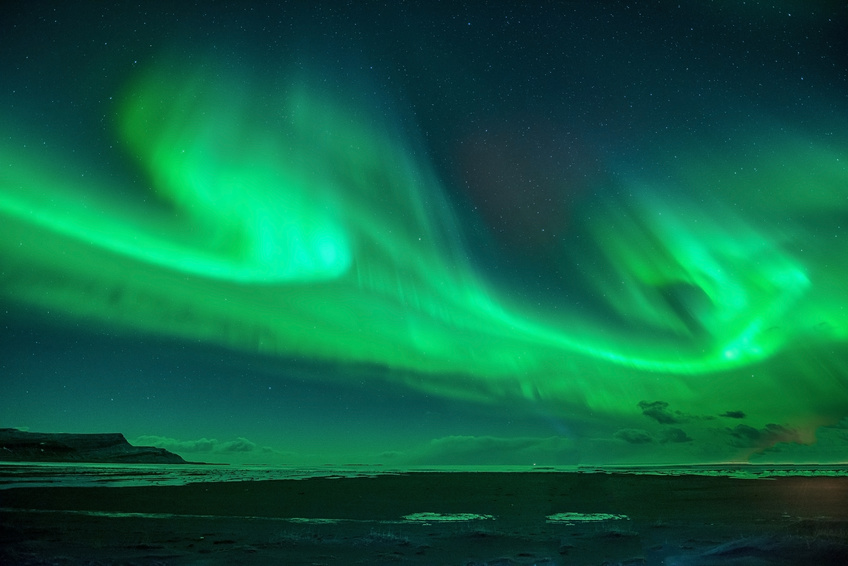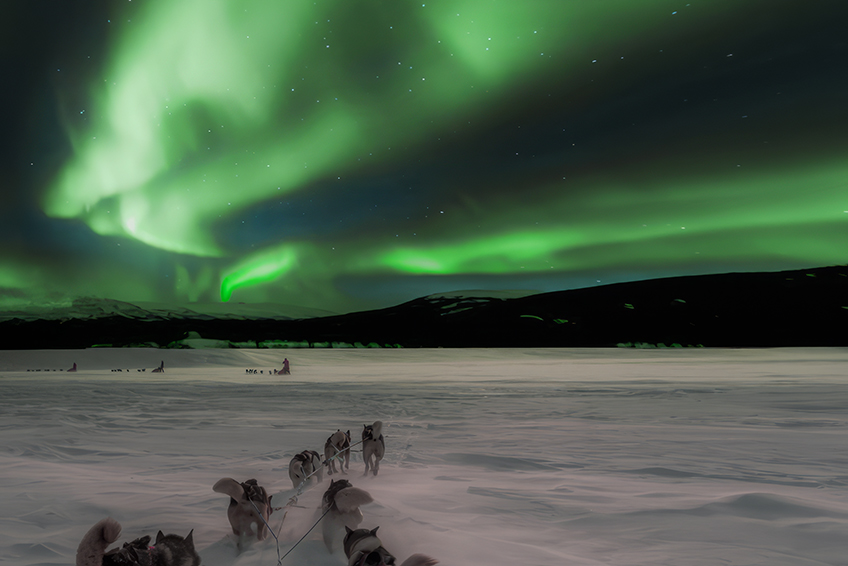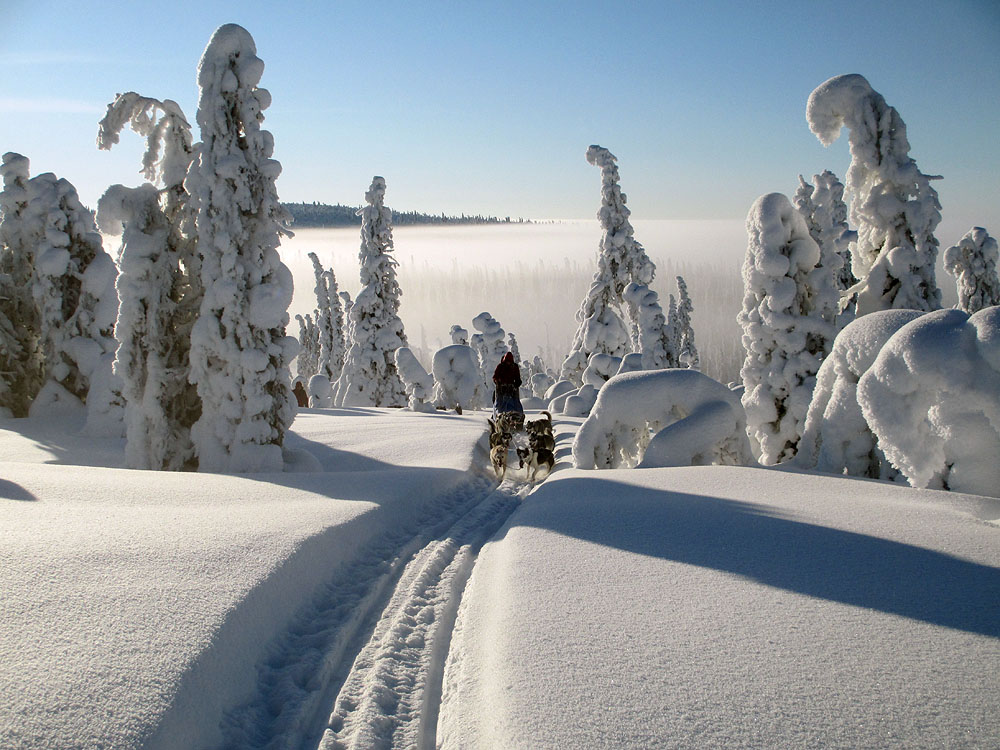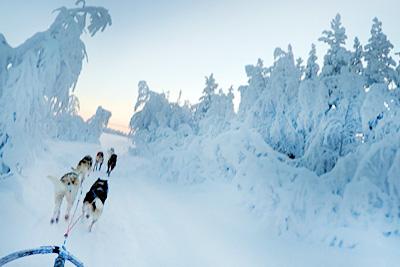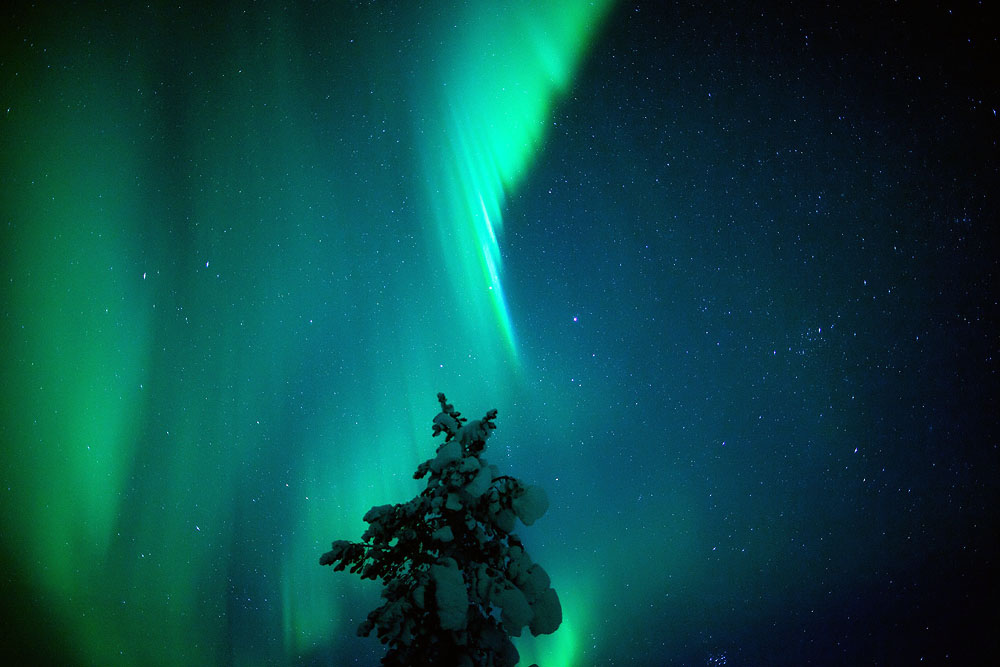Northern Lights: A spectacular natural phenomenon in the north
The magical Northern Lights
The coldest regions of our earth are the scene of a natural phenomenon of a very special kind: Here, the magical auroras show themselves at their best and dance silently in the clear night sky. Let yourself be enchanted on cold winter nights, when the whole sky shines and the winter landscape will impress you with a mystical silence.
A unique experience becomes an extraordinary memory that will last for a lifetime. The fascinating glow in the sky attracts many people from all over the world to one of the most remote places on earth, and continues to leave people in wonder again and again. It's difficult to resist the magic and beauty of nature. Learn more about the magical Northern Lights.
With all husky tours that we offer, you will have the best chances to see the spectacular Northern Lights. The following trips are specifically designed to observe the Northern Lights:
Manifestations of the Northern Lights
The Northern Lights can appear in a variety of forms and colours. Whether it’s veils that run across the sky, a shimmering arch that spans the horizon, single rays, or even the entire night sky – each aurora is unique and intriguing. Red, green, and blue are the usual colours you can expect to see in the Aurora Borealis, but it’s not uncommon to see vivid displays of violet, white or even yellow arise. Thus, the Northern Lights appearance can be quite unique for each husky tour destination. The height of the phenomenon decides on the beautiful colouring, so that a red glow in higher oxygen layers is formed as a green light.
Occurrence and conditions for observation
As soon as the sky is lit up by that first colourful glow, goosebumps are guaranteed. The effect of this natural beauty is hard to resist. The dancing lights occur in the southern and northern polar regions. They can be observed in the months of September to April, since the nights are only dark enough during this season. Spend your icy winter days exploring snow-covered landscapes, for example on dogsledding tours, and breathtaking nights under starry skies adorned with the fascinating Northern Lights.
Good and clear weather conditions are a prerequisite to witness this natural spectacle. A heavy cloud cover would block the view of the beautiful lights and make observation impossible. The spectacular play of light is most often seen between 6 pm and 1 am, but can generally occur at any time it is dark. If you look for a place where no artificial light sources disturb the view, then you have the best chances for a breathtaking show. Surrounded by complete darkness, the magical lights are particularly easy to spot and offer a wonderful photo opportunity for a Northern Lights photo. Hold that moment for eternity! Even though it's hard to catch the Northern Lights – it’s not impossible and with the right camera settings, you can capture the perfect to treasure forever. It is advisable to take a photograph of the dancing lights with another subject in front, such as a house or a tree, so that the impressive size of the natural spectacle is fully expressed.
Myths about the Aurora borealis
People have always been fascinated by the mystical apparitions in the night sky known as the “Aurora borealis”. As such, numerous Northern Lights myths and legends have been told over the years and across countries. There were times when humanity even feared the Northern Lights, and there were many different explanations about how the Northern Lights came to be in existence. In Europe, we know that once upon a time, the lights could even be seen in Italy and Greece. In fact, the very name “Aurora Borealis” is derived from the ancient Greek words “Aurora” meaning “sunrise” and “Boreas” meaning “wind”. The red flickering lights in the sky reminded people of fire and blood, and thus understandably caused fear. Various theories were developed to explain these strange and frightening appearances. Often, the Aurora Borealis were associated with war or the vengeance of angry gods. In the northern regions, people became accustomed to the everyday appearances of these lights, and held onto their own beliefs that the lights were the spirits of the dead.
Today, we know more about the magical glow in the sky and the scientific reasons behind them, but that doesn’t stop them enchanting us time and time again. Even though science has advanced, there remains a special link between the Sami population and the Northern Lights. Children are often taught that the Aurora borealis must always be treated with respect, and it is forbidden to scream or whistle under the lights. One does not speak in daylight about the magical glow in the sky or even express negative thoughts about them. The times when the lights were feared and considered a threat are long gone, but the old beliefs and traditions are still there.
The true origin of the Northern Lights
The appearance of the Northern Lights still not been fully explored to this day. Therefore, scientists travel to the most remote places in the world to study them further. Constant evaluations and research provide new insights into the universe, the sun, and the earth. The emergence of the dancing lights in the sky is directly related to the sun and the magnetic field of the earth. The largest planet of the solar system not only provides heat and light to our planet, but is also responsible for the breathtaking dance show of the Northern Lights. With the solar wind, protons and electrons enter the universe. When the charged particles hit the magnetic field of our planet, they are captured and directed to the poles. There they penetrate into the upper atmosphere, where the electrons of the solar wind strike the molecules of the atmosphere. It comes down to a lively exchange of energy, the molecules are charged electrically and energetically and begin to shine.
From the earth, you can watch the beautiful Northern Lights in a belt around the poles. The place where you stay is often crucial to determine the colour of the Northern Lights that you will witness. For example, in the north of Scandinavia, due to its close proximity to the North Pole, you will see a predominantly green glow. Whenever the solar wind penetrates into the atmosphere with its protons and electrons at higher altitudes, such as in central Europe or the north of the USA, mostly red Northern Lights can be seen instead. In these parts of the earth, however, sightings are more rare as they are due to the occurrence of exceptional solar activity, such as a solar storms.
Your journey to the Northern Lights
For many people, seeing the Northern Lights at least once in their lifetime is a dream come true. Thus, a Northern Lights trip is on many people’s bucket lists. A journey to the far north can make that dream a reality. A stay in the northern regions is the best prerequisite to witness the natural spectacle of the beautiful Aurora Borealis. In particular, the length of the journey is of great importance, since the likelihood of observing the Northern Lights increases the longer you stay in the region. Dog sledding tours in Sweden, Norway, Finland, Canada or Alaska are perfect to go hunting for the lights. In the wilderness, far away from artificial light sources, and at night time, you will have the best chances of seeing a particularly pronounced show of the Aurora Borealis.
And what could be better than experiencing the magical light with your four-legged furry companions on a husky tour? The Northern Lights have astonished people for centuries and will not lose their effect on us in the years to come. The combination of exciting winter activities during the day and the fantastic and mystical Northern Lights at night gives the north a special charm unlike anywhere else in the world. Let yourself be enchanted by these magical lights.


